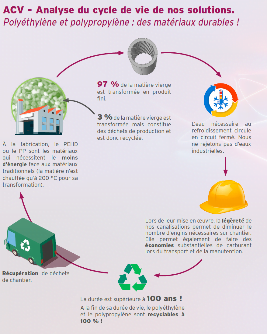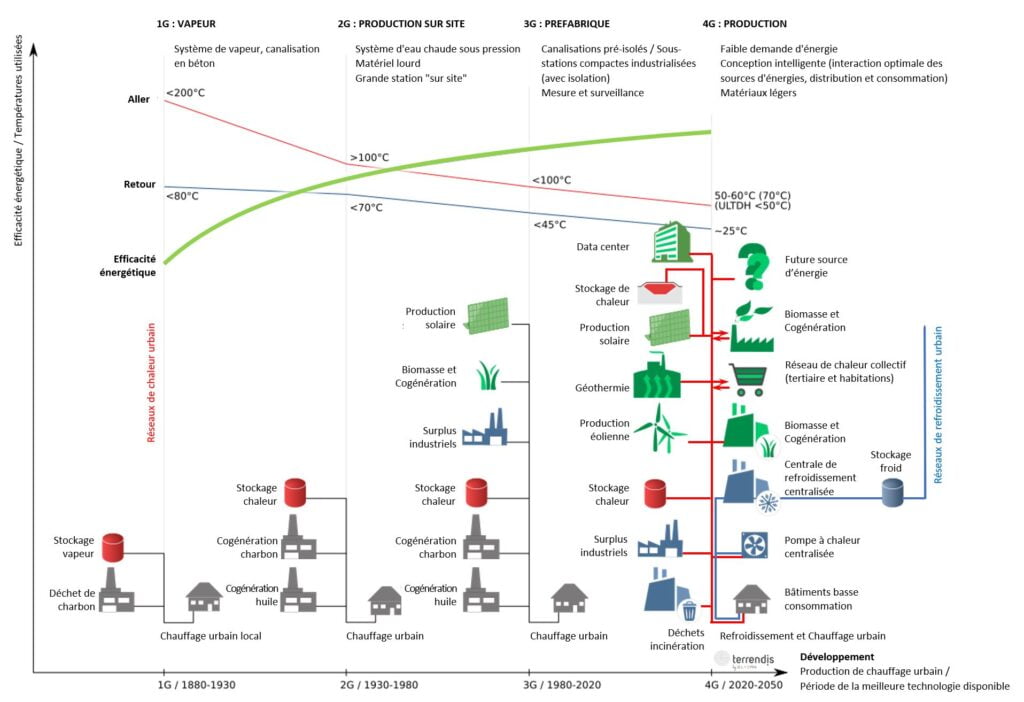For several weeks now, we have been reviewing the history of heat networks to find out a bit more about this topic.
The latest environment and climate news has prompted us to look more closely at the solutions available when designing our projects, to combine our personal comfort with that of our planet.
Decarbonisation, Circular Economy and Energy Efficiency are all contemporary issues that we will outline briefly, as they feed into our thought processes here at ELYDAN.
DECARBONISATION
Decarbonisation refers to the array of the measures and techniques designed to reduce the intensity of carbon – and CO2 in particular – in the energy sector, or indeed in the whole economy.
The aim is to find alternatives that emit less carbon dioxide (renewable energy, nuclear, natural gas), more energy-efficient processes (energy performance, cogeneration), less energy-intensive production methods (working from home, services) or Co2 capture and storage before or after fuel use.

CIRCULAR ECONOMY AND LOCAL CONSUMPTION
As a concept, the circular economy first emerged in the 1970s and is a system of trade and production that, at each stage in the life cycle of a product (goods or services), aims to improve the efficiency of resource use and reduce the environmental impact, while enhancing everyone’s personal well-being (Ademe).
According to François Michel Lambert, president of the Institut de l’économie circulaire in France:
“The circular economy aims to process raw material waste and use it in other products or for other applications. In other words, there is no residue, as everything can be absorbed by industrial or natural systems. It’s a closed loop. It obviously offers a huge competitive boost for the industries that manage their raw material flows this way.”
ENERGY EFFICIENCY

In brief:
1/5 – The first heat networks
2/5 – Modern heat networks
3/5 – Present-day heat networks
4/5 – Sustainable heat networks
3 key facts to keep in mind:
- Existing French solutions – Local circuits,
- Materials used are stable over time – Durability,
- Optimisation of installations through careful thought and design to achieve energy efficiency
Sources :
https://bit.ly/32vRJdy
https://bit.ly/3ljfT3D